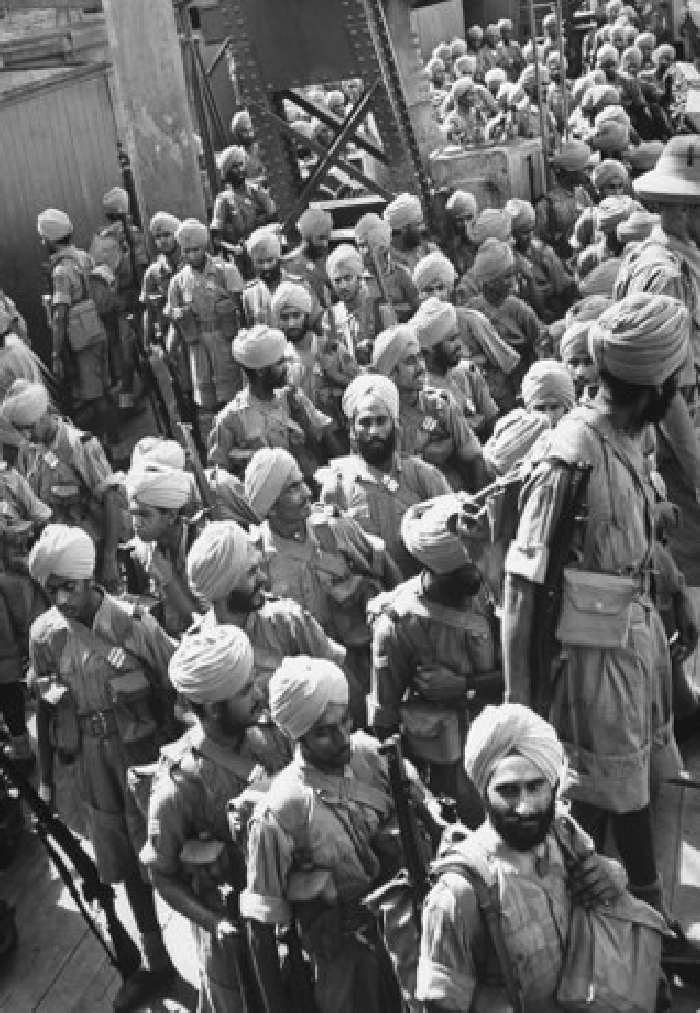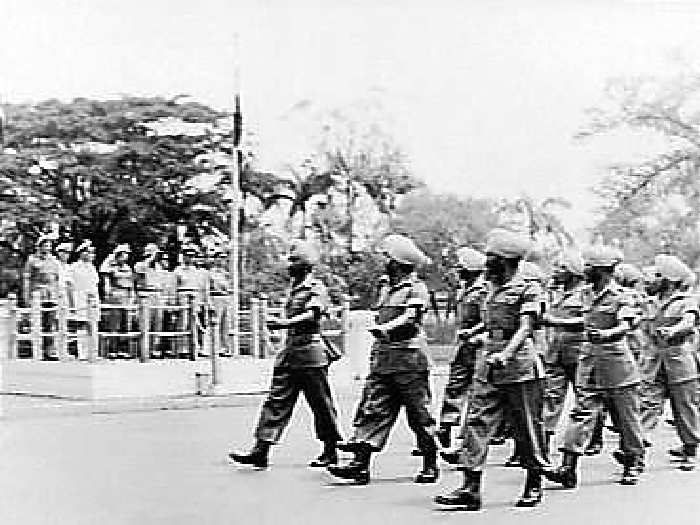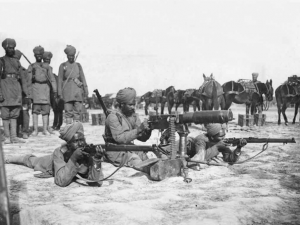| Timelapse 4 mei 2014 | |
|
| |
|
 Sikh troops disembarkimg from ships into Malaya. Courtesy IWM. |
 Sikhs Soldiers Parading at Van Mook Line, Java, dividing Dutch & Indonesia in 1946. |
Recognition of the contribution of Sikh soldiers in National Committee (NC) Magazine page 52-53 - National Committee 4 & 5 May, Voorjaar 2015. By: Dr. Esther Captain, a Dutch Historian *3 Liberated by the Sikhs A Contribution of the British Indian Army for freedom Did you know that Ben Bot, former Minister of Foreign Affairs who was kept prison, being a boy of eight years old in Tjideng camp, was liberated by the Sikhs? Every year on the National Commemoration day, they are present on the Dam, men originating from India with their strong colored Orange Turban. Few people know that Sikhs played an important role during the liberation of Europe and the former Dutch Indonesia says Bhupinder Singh Holland, since 1973 living in the Netherlands working as an Accounting analyst for IBM. Sikhs were part of the Colonial British- Indian Army. In 1849, the British army occupied the Punjab. Many Sikhs enlisted in the British army and so the Sikh military soldiers set foot in various parts of the British Empire. During the First and Second World War over four hundred- thousand Sikhs fought along the British. They were known for warlike and bravery and used their own traditional weapons like Daggers and Sabers (Kirpan) Liberation In the Second World War, Sikhs were part of the Allied Forces and were deployed in the Battle against Japan in the former Dutch Indonesia. After the capitulation of Japan in August 15th 1945, the British were given the Command over Java. Few European Military men were readily available: one battalion of Scottish Highlanders. Although 45.000 British-Indian troops landed in Java. According to Bert Immerzeel, a Dutch Historian wrote on his weblog Java Post: '' their deployment could have turned out in a negative way. They were soldiers of a country, who itself was fighting for Independence. Their sympathy could have gone out to the Indonesians. But no alternate was available1. Active support for the Indonesians took place on a very limited scale. Turban Trix Meijer-Olivier witnessed, as a girl of nineteen years old the Japanese occupation and the following struggle for independence at Amabarawa ( in the middle of Java), She was deployed to help the wounded at the medical ward. She remembers: A Sikh got a shell splinter in his belly. He was on the drip and got wild. Even in bed Sikhs wear their turban, because you are not allowed to see their hair. He started to move wildly and the danger arised that the needle might go out of his arm. I stayed around to guard the arm because the man was strong like a bear. Such events you do not forget. He had very beautiful eyes2. In total 83.000 Sikhs were killed in action during the First and Second World War and 109.045 wounded. Sikhs use " Singh" as their last name as you can see at the "Menen Gate" at Ieper in Belgium where the last post since 1926 is blown every day to honor the 54.896 soldiers and officers of the Commonwealth missing in action. In the Netherlands, the Sikhs community counts about 12.000 people. It is the fifth religion in the world with about 25 million adherents. Sikhism was established by Guru Nanak (1469-1539) who was born in the Punjab. Most Sikhs today live in the northern state of Punjab. The word Sikh comes from Shishya, Sanskrit for disciple. A Sikh who lives according to his religious rules is a vegetarian, drinks no alcohol and prays three times a day. Further readings:
References: |
| S. Ranjodh Singh, publisher of "Sikhs in World War 1 & 2 of GS Distribution, Inc, Ludhiana., Author, S Bhupinder Singh Holland., Committee members of Guru Nanak Gurdwara Sahib, Rotterdam- S. Sukhwant Singh, S. Lakhwinder Singh, S. Sadhu Singh, S. Jasbinder Singh, S. Saroop Singh. dated 12-04-2015. Place " Guru Nanak Gurdwara, Rotterdam. The Netherlands. |






